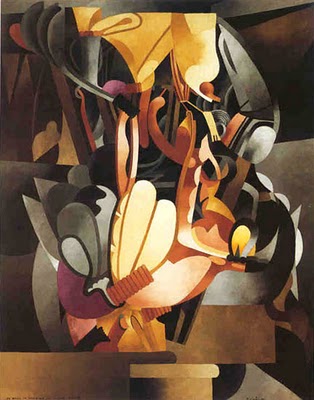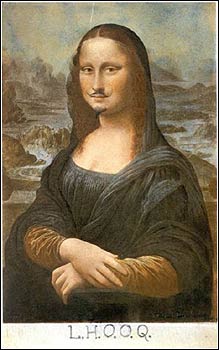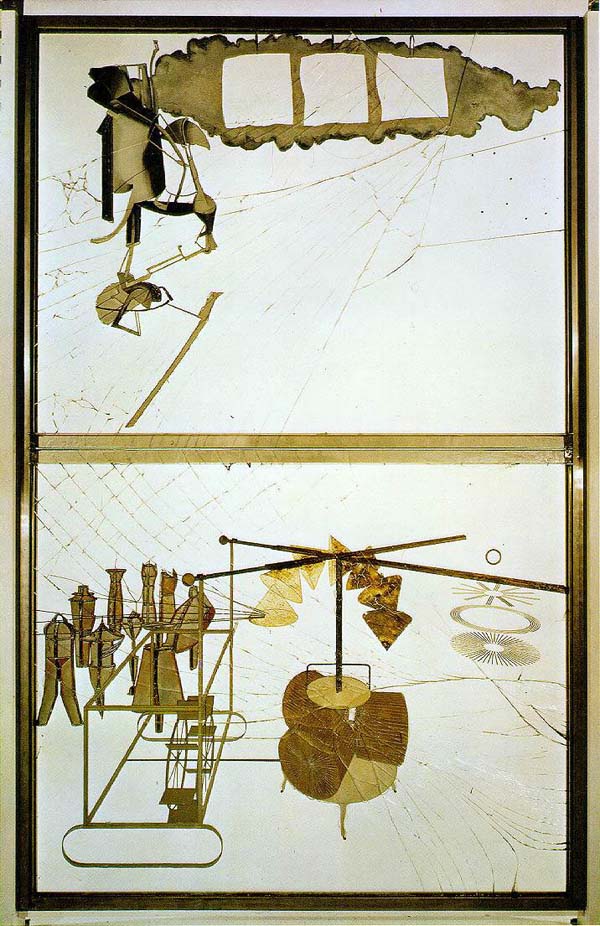By detaching art from aesthetics,Marcel Duchamp set it spinning on a different course from the one it had followed since the Renaissance. His concept of the ready-made work of art came out of the blue. It could not have been foreseen and was by no means inevitable. There were no precedents in art for the idea that by taking an ordinary object from the real world and placing it in an art gallery, the artist could completely change its meaning.
…However, appearances, and well supported arguments to the contrary, such as the art of Van Gogh for example; is it possible that the theory of the autonomous self might be nothing more than a consoling fiction, albeit an extensive and complex one?

Carlo Ginzberg:Sigmund Freud claimed that personality should be found where personal effect is weakest. Careless little gestures reveal our characters far more authentically than any formal postures. In his essay, “The Moses of Michelangelo”, Freud coupled psychoanalysis with Morelli’s method, of which he said “It, too, is accustomed to divine secret and concealed things...
…The effects of Van Gogh’s way of painting is that most of his mature pictures seem as if they are penetrated by a vigorous inherent vibration. It seems as if a strong invisible force , an irresistible and overwhelming power that has invaded the scene; and also the body of the artist where it has commanded the nervous brushstrokes with which he executed his work. Now, this particular Van Gogh style is certainly a precise expression of his peculiar personality. Thus, his work does illustrate the conviction that style is an authentic manifestation of man himself. On the other hand, however, the example of Van Gogh also casts doubts on the optimistic presupposition that this so-called “man himself” really is that autonomous authority as which it is frequently seen by those who advocate the idea that style is a matter of intentional choice or , at least of a deliberate and willful striving.

Giovanni Morelli had a different approach. He valued artistic spontaneity in a painting for identifying the real artist. In order to recognize a genuine painting, Morelli carefully examined the unintentional traces of the painter found in the details: fingers, and the lobes of ears, for example.
As becomes evident in the case of van Gogh, the autonomous self might turn out to be nothing but a consoling fiction. From such a point of view, which is admittedly pessimistic, but perhaps also more realistic, it is attractive to consider style as a result of unintentional processes, as it was already done by Giovanni Morelli, who, during the lifetime of Van Gogh, published a number of essays in which he identified a number of wrongly ascribed pictures in famous European galleries by means of certain details which were characteristic of the respective painters exactly because they were executed with little or no attentiveness at all: for example ears, toes and fingernails.
As Freud would later show, psychoanalysis and its own pursuit of the cagey human ego, often led man to places where he was not master in his own house as well as no longer being the procreator of his own style. Style fell into the the warehouse of the mind and could be drop-shipped to different areas of the mind. “The unconscious is structured like a language. So, to be sure, is the conscious. Therefore, no matter if style is an expression of the conscious or of the unconscious, it is in any case an inscription regulated by a system of possible oppositions, combinations and replacements.” ( Lacan )

---While I was reading about remediation, my mind immediately went to the idea of found objects in art. The first object in this post is Marcel Duchamp’s Fountain from 1917. As one of the leader’s of the Dada art movement, Duchamp championed the idea of found objects as being a part of his anti-art aesthetic. A discarded toilet bowl would most likely not fit into Bolter and Grusin’s conception of media, however their ideas can easily be applied to the object. They state, “The work becomes a mosaic in which we are simultaneously aware of the individual pieces and their new, inappropriate setting. In this kind of remediation, the older media are presented in a space whose discontinuities, like those of collage and photomontage, are clearly visible…the new medium can remediate by trying to absorb the older media entirely, so that the discontinuities between the two are minimized”---
Evidently, there is a certain fear, and a necessary courage involved in breaking with a given convention. And also perhaps a certain futility since the options to go beyond style are almost in the realm of science fiction.
According to Theodor Adorno, art must reject all socially determined communication, which he equates with consumer manipulation and regression.But Adorno, cannot liberate his own ideas from the aesthetics of Marxism; there will always be a co-existence necessary, a willingness to bind that is rooted in a metaphysical “inevitable destiny”. For Adorno, art can only resist the false consciousness imposed by the culture industry by declaring its autonomy from all discursive meaning and communication. It must
“insist upon
own ossification without concession to that would-be humanitarianism which it sees through, in all its attractive and alluring guises, as the work of inhumanity. Its truth appears guaranteed more by its denial of any meaning in organized society of which it will have no part — accompanied by its own organized vacuity — than by any capability of positive meaning within itself. Under the present circumstances it is restricted to definitive negation.”

Rachael Milsk:It commmerates a victorious moment in America’s history, where the country’s strength prevailed. By replacing the flag with a McDonalds sign, the image takes on a completely different message. I interpret the switch as, rather overtly, saying that America no longer stands for patriotism, but rather for consumerism. As an American living in Holland, this imagery (of the Iwo Jima memorial) was readily accessible, but I am not sure that this message would have been as overt to the Dutch citizens of the neighborhood.
Art is condemned to an abstract negativity, losing its function as a mode of ideological struggle. Severed from the function of promoting a critical awareness of social conditions, negation is confined to the vapid championing of the esoteric and meaningless, exemplified for Adorno in the work of Beckett and Kafka. ( Thomas Andrae )
The creation of an oppositional mass art thus must impotently await the negation of capitalist society, without playing an active role in hastening its demise. However, Adorno believes that the culture industry has so implicated the masses in false consciousness that any form of revolutionary praxis is utopian. His analysis thus ends in an insurmountable vicious circle. We are stuck with style in new and varied forms; as long as art wishes to express “something” it falls into a zone where the conditions of possibility guarantee the use of style as a vehicle or messenger.

Milsk:However, I would argue that her placement makes it appear that way but in actuality she is not. This image, of Anne Frank wearing a kaffiyeh scarf, was a regular graffiti image that one could see all over the city. Because of that fact, I think it makes the most sense to analyze it without the context of the rest of the image. The kaffiyeh, beyond being a fashion-staple in Europe, is a sign of Palestinian solidarity. Anne Frank wearing a kaffiyeh brings up a whole host of issues – most directly Holocaust guilt and the Arab-Israeli conflict. The survival rate of Dutch Jews was abomindably low (I believe only 2nd to Poland) and the country has difficulty reconciling that fact. Anne Frank’s image is a constant reminder of that and to reappropriate it in terms of the Arab-Israeli conflict is quite interesting.
Marcel Duchamp and his urinal was an experiment in semantics where an arbitrarily selected object becomes part of the art world. His brainwave set in motion the entire concept of unforeseeable processes that had ramifications across politics and economics; how seemingly minor acts or events can catalyze fates in ways that in retrospect seemed improbable.An extreme example would be juxtaposing Jesus and Allah within the contingencies of their respective religions resulting in appropriations and actions with little resemblance to the initial intent.
Duchamp knew beforehand that the fate of that simple object could no longer depend on him, the artist or his idle intentions. The fate of the object would be a result of the unknown. ” The artist, therefore, loses his customary function. He is no longer the sovereign creator of his work. Instead he becomes more like a fictitious character of an arbitrarily invented tale that is optionally added to a work which has its own independent life. It is thus also completely consistent with Duchamp’s tendency to erase himself as the author of his art that he adopted a second identity under the name Rrose Selavy” ( Ludeking )
The difference that Duchamp tapped into was the absence of stylistic coherence, something unique when compared to say a Rembrandt. There is no way to predict was the rest of Duchamp’s work would resemble and the inference of eternal reproduction is a precursor for Warhol. The art of Duchamp was a break from the syndrome of “precious object in a gilded frame” that was supposed to contain the sum expression of a self-possessed person. Art becomes transformed into a subversive act of commentary, a new form of narrative, on a “ready-made” system of language. Art, as it is conceived by Duchamp is no longer understandable as a specific use of language; it is at best about language. Style is thus the inevitable psychological baggage that we drag around, a materialistic function that we dress up, analyze, and use as a focal point for an examination of insecurities.
ADDENDUM:
One of the prophets to the behaviorist faithful is B.F. Skinner. To understand Skinner’s view of the world as expressed in Beyond Freedom and Dignity (1971), one first needs to take a trip to the video store and spend some time analyzing The Matrix. Such a venture would provide a good illustration for Skinner’s premise that man lives in “a system of slavery so well designed that it does not breed revolt …The literature of freedom has been designed to make men ‘conscious’ of aversive control, but in its choice of methods it has failed to rescue the happy slave” . The happy slave, which is the highest position one can strive for in Skinner’s world , is not assisted but rather harmed by those who would trumpet freedom and dignity for the individual. While he acknowledges the historical role of such pursuits, Skinner asserts that in this day and age such ideas are hindrances to the progress of human kind.

The stripper Picabia evokes in I See Again in Memory My Dear Udnie or the vaudeville dancer in Man Ray's The Rope Dancer Accompanies Herself with Her Shadows were sisters to the most notorious striptease artiste in art, the frigid bride in Duchamp's The Bride Stripped Bare By Her Bachelors,
Skinner bases his position on his own studies and observations of behavior , rejecting the traditional interpretations of the mind, feelings, aspirations, desires, and personhood, favoring instead genetic endowments and personal history of interaction with the environment. Skinner rejects the notion of promoting freedom and dignity as worthy attributes, asserting instead that man’s attention would be better directed toward the physical and social environments in which he finds himself; freedom and dignity stem from a prescientific view and “are possessions of autonomous man of traditional theory, and they are essential to practices in which a person is held responsible for his conduct and given credit for his achievements. A scientific analysis shifts both the responsibility and the achievement to the environment”
Skinner presents a view of man that is both reductionistic and deterministic. Regarding freedom Skinner says, “Man’s struggle for freedom is not due to a will to be free, but to certain behavioral processes characteristic of the human organism, the chief effect of which is the avoidance of or escape from so-called ‘aversive’ features of the environment” . In his chapter on dignity Skinner begins with the statement, “Any evidence that a person’s behavior may be attributed to external circumstances seems to threaten his dignity or worth” . Because all behavior and attributes are the result of external circumstances, man’s search for dignity “stands in the way of further human achievements” .
It is the final chapter, “What is Man?”, that is the most intriguing and most important, and probably the most controversial. Skinner begins by restating what he has said in one form or another a hundred times prior, “As a science of behavior adopts the strategy of physics and biology, the autonomous agent to which behavior has traditionally been attributed is replaced by the environment-the environment in which the species evolved and in which the behavior of the individual is shaped and maintained” . Over and over in this chapter Skinner refers to social contingencies as the root cause and governing factor of morals, consciousness, and goals. “What is to be abolished is autonomous man-the inner man, the homunculus, the possessing demon, the man defended by the literature of freedom and dignity…His abolition has long been overdue” .
For all that can be found lacking in Skinner’s interpretation of the psyche, there are contributions which should be acknowledged. First, it behooves the introspective individual (even though Skinner would deny the notion that one could be introspective) to consider just how much of an impact the environment has on one’s behaviors and psyche. The empirical evidence championed by the behaviorist most certainly points to the reinforcers and social contingencies which effect the way an individual behaves every day. Practice often lags behind principle for this very reason. A sinner saved by grace does not automatically stop being a sinner; the Bible acknowledges this time and again with constant admonitions to keep one’s social environment free from influences that guide the individual into ungodly behavior. While behavior modification is not the supreme goal of sanctification, it does play a role and the behaviorist perspective can have a place in helping the Christian to tackle that role in an organized manner.
Second, and again by way of empirical evidence, Skinner makes a brief but profound implication which should cause the Christian to ponder his relationship with the rest of creation: “Traditional theories of autonomous man have exaggerated species differences. Some of the complex contingencies of reinforcement now under investigation generate behavior in lower organisms which, if the subjects were human, would traditionally be said to involve higher mental processes” . Skinner of course is making an argument that human beings do not have mental processes higher than any other creature, saying earlier, “…whereas the traditional view supports Hamlet’s exclamation, ‘How like a god!,’ Pavlov, the behavioral scientist, emphasized ‘How like a dog!’” . The position being set forth in this paper is the inverse of Skinner’s; man does indeed possess higher mental processes, but he may not be the only creature that does.









 COMMENTS
COMMENTS



